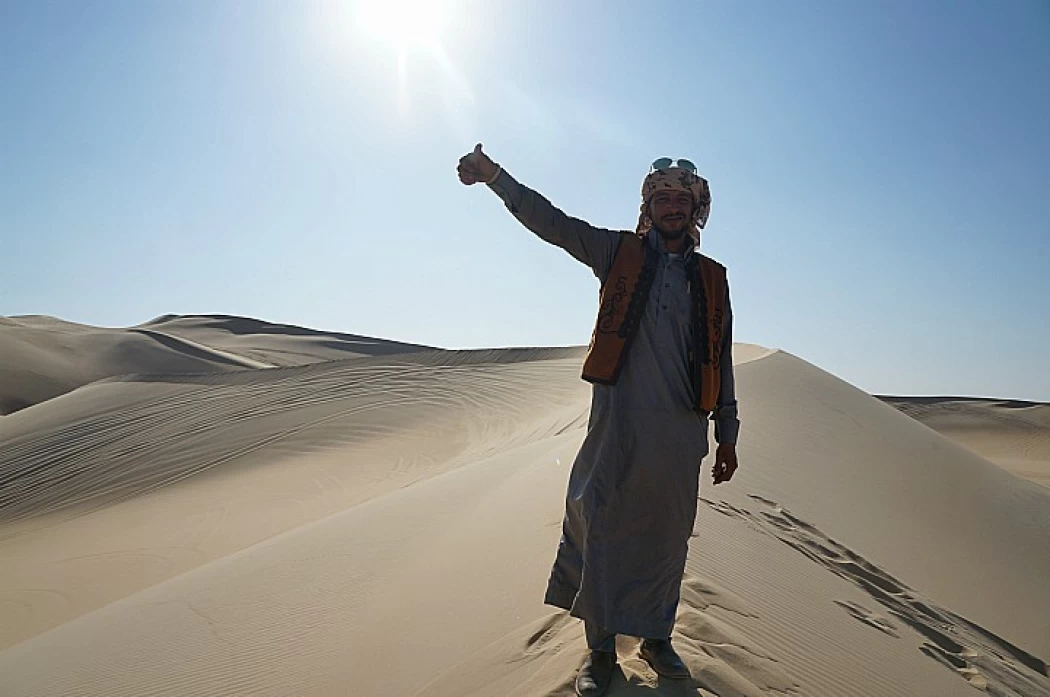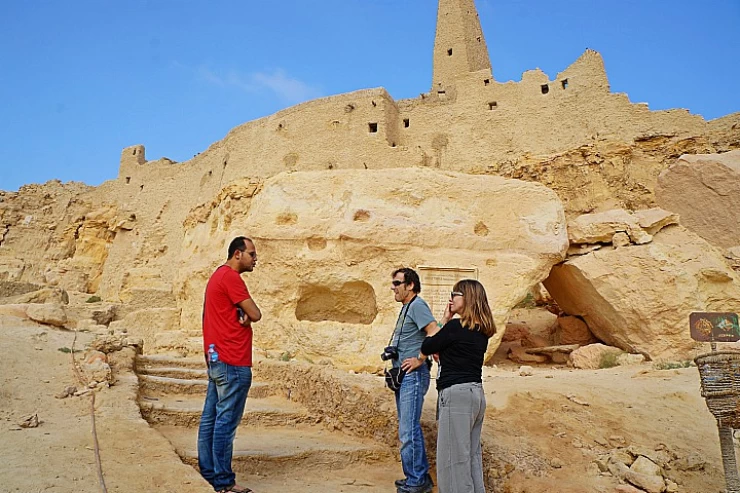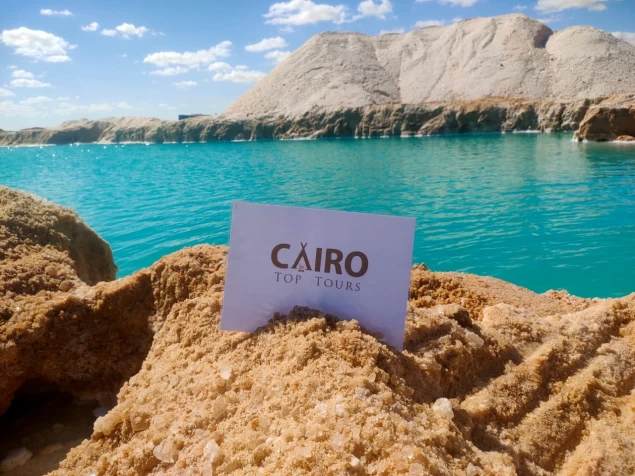
The Great Sand Sea in the Western Desert
The Great Sand Sea: Egypt’s Majestic Ocean of Dunes
Extending across the gigantic Western Desert of Egypt and creeping into Libya, the Great Sand Sea remains one of the most magnificent and mysterious dune fields on our planet. This great natural wonder sprawls over an area of about 72,000 square kilometres and is thus among the largest bodies of continuous sand sea in the world. With its wide sweeps of dunes, gleaming sands, and chilling silence, the Great Sand Sea is a real-life world of fantasy and the physical record of colossal geological forces at work.
Geographical Location and Extent
The Great Sand Sea is to the west of the Nile and stretches from just below Siwa Oasis to Gebel Uweinat in the south. It is a gigantic band of dunes, which stretches for hundreds of kilometres along the Egypt–Libya border.
This great sea of sand is comprised of longitudinal dunes that are about 100 kilometres in length and 100 meters in height or more. The uniformity and parallel orientation of these dunes are due to the effect of prevailing winds for thousands of years.
Geological and Natural Features
The Great Sand Sea is an area covered by quartz sand that forms ridges, waves, and valleys due to the process of wind erosion and deposition. Certain regions possess peculiar geological formations, like
Silica Glass Field: In the vicinity of the Gilf Kebir plateau, scientists have discovered Libyan Desert Glass, a strange alien natural glass caused by an ancient meteorite landing. These fragments are some of the purest silica that have ever been found in nature and were even used in ancient artifacts like a scarab that formed a part of Tutankhamun’s pectoral.
Sabkhas and Interdune Plains: In between the vast expanse of dunes, there are low-lying plains and salt flats (sabkhas) that create a strong contrast with the great sand mounds they are surrounded by.
Historical and Archaeological Significance
Unfriendly as it is, the Great Sand Sea has been part of the ancient trade routes and has been surveyed as part of various expeditions, especially in the 19th and early 20th centuries. The area holds:
Prehistoric rock art, with particular reference to the Gilf Kebir and Jebel Uweinat, showing animals, humans, and a part of daily life from a greener Sahara time.
Remains of World War II, such as vehicles’ remains and those relics from the period when the Long Range Desert Group was functioning in the region.
Modern Exploration and Tourism
Although still distant and difficult to reach, the Great Sand Sea has become an object of desert expeditions and 4×4 safaris, as well as a spot for adventure tourists. Guided trips tend to take off from the Siwa Oasis or the Bahariya Oasis, which takes the travellers into the depths of the dunes and remote desert monuments such as
The Gilf Kebir Plateau
Wadi Sura (Cave of Swimmers)
Ain Dalla & Abu Ballas (The Pottery Hill)
In return, visitors receive unequalled tranquilly, stargazing, and the look and feel of one of the last wildernesses of Earth.
Environmental Concerns and Preservation
The Great Sand Sea is fairly immune to human settlement because of its isolated condition. Yet, an increased interest in the tourism of deserts has led to a demand for sustainable travel practices to preserve this delicate ecosystem. The
The Great Sand Sea extends approximately 650 km from north to south and 300 km from the east to the west which is recommended for travelers if you explore Siwa Oasis from Cairo.
It is a sandy region, located in North Africa, extends from western Egypt and eastern Libya. 74% of its surface is covered by sand dunes. Oasis, caves, precious stones and dreamlike landscapes make up this extraordinary and little known place. Tourists visit Siwa Oasis to explore the maificent formations and olden sand dunes as well as the historical sites like the Temple of Alexander the Great, the Mountain of the dead and Cleopatra spring.
Egypt Western Desert The Egyptian Great sand sea is parallel to the Calanshio sand sea of Libya, with which it borders to the north. The dunes cover approximately 10% of the total area of the western Egyptian desert. This sea of sand was well known to the merchants traveling with caravans through the Sahara.
Friedrich Gerhard Rohlfs was the first European to document the Great Sea of Sand. He began his Saharan expeditions in 1865, and named the vast expanse of Grobe Sandmeer dunes, but it was in 1924 with Ahmed Hassanein's maps that Europeans could appreciate the expanse of the sandy sea. The area is remarkable for the presence of quicksand, which is the reason for its existence, because it consists of layers of quicksand over a layer of limestone and over a large amount of groundwater and this is the reason for this large movement and therefore this area has recently been determined to be prohibited to pass through it History Many cases of disappearances in this area are mentioned. However, a tourist movement has emerged in the region in terms of tourists to see the landscape of the region, as well as the practice of sand skiing.
You can explore the Great Sand Sea with Cairo Top Tours through the Trips from Cairo to Siwa Oasis .enjoy the Great Sand Sea Safari to the Desert of Egypt during your amazing Egypt travel packages or during Cairo Day Tours. The Great Sand Sea is approximately 72,000 km². Gerhard Rohlfs the German explorer the first European to enter the Great Sand Sea and the man who named it.

















